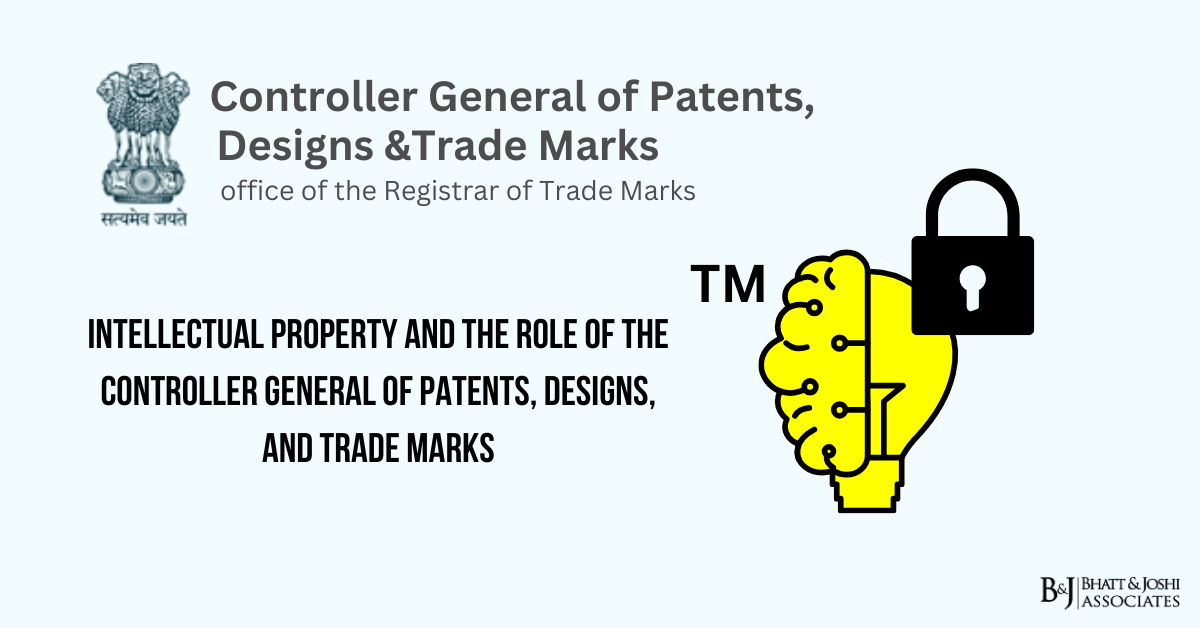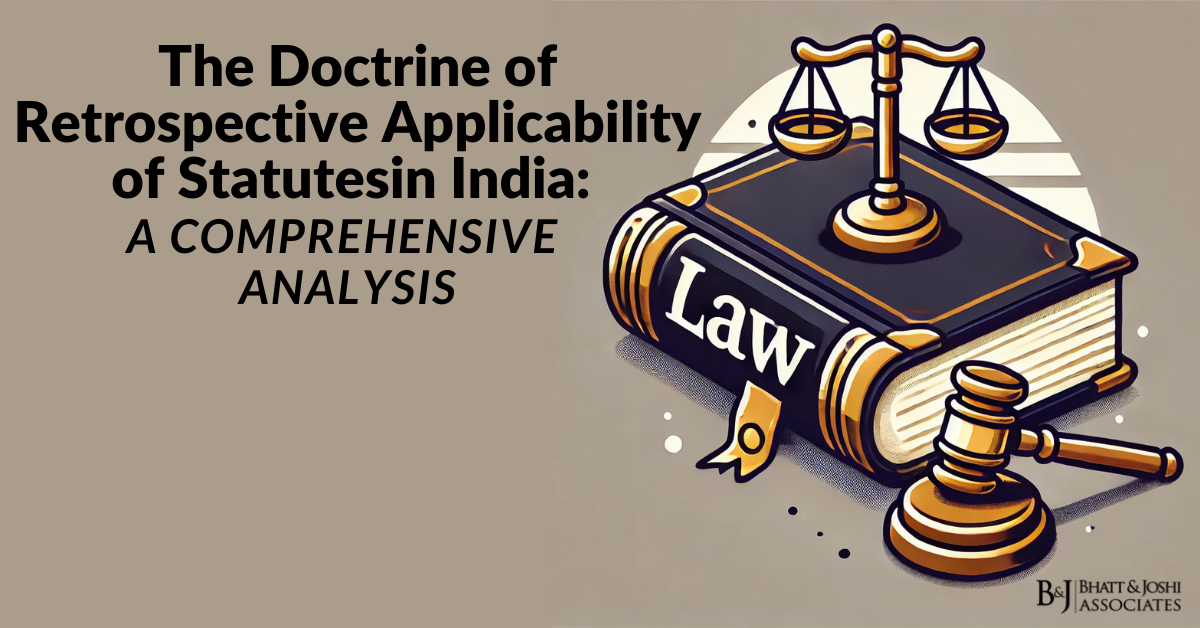Introduction to Intellectual Property Rights (IPR) in India
In an era where knowledge and creativity are the bedrock of economic progress, Intellectual Property Rights (IPR) have emerged as a powerful tool for protecting and fostering innovation. Intellectual property encompasses creations of the mind, from inventions and designs to brands and symbols. Recognizing the value of such intangible assets, India has established a structured legal framework for IP protection, led by the Controller General of Patents, Designs, and Trade Marks (CGPDTM), a central authority under the Ministry of Commerce and Industry. The CGPDTM is responsible for administering intellectual property rights, safeguarding the economic interests of inventors, designers, and businesses.
India’s IP framework, strengthened over decades, aims to encourage innovation while balancing access and affordability, particularly for essential goods. This article delves into the evolution of India’s IP regulations, the role and structure of the CGPDTM, key legislative frameworks governing patents, designs, and trademarks, landmark judgments that have influenced IP regulation, and the challenges and advancements in IP administration.
The Evolution of Intellectual Property Regulation in India
India’s history of IP regulation began during the colonial era. The Patents Act of 1856 marked the first legislative effort, inspired by British law, to protect innovations in India. However, it was the post-independence period that brought a significant transformation to IP law, driven by the need to balance protection with access. The Patents Act, 1970, remains a cornerstone of India’s IP legislation, favoring process patents over product patents in key sectors, including pharmaceuticals, to maintain affordability. This approach changed with India’s accession to the World Trade Organization (WTO) and the adoption of the Trade-Related Aspects of Intellectual Property Rights (TRIPS) Agreement in 1994, which required India to adopt product patents across all sectors.
Since then, India’s IP laws have evolved rapidly to comply with global standards, while also accommodating unique socio-economic conditions. Amendments to IP laws, such as the introduction of the Trade Marks Act, 1999, and the Designs Act, 2000, reflect India’s commitment to promoting innovation while safeguarding public interest. The CGPDTM has emerged as the custodian of IP rights in India, ensuring that IP frameworks align with international practices while catering to domestic needs.
The Role and Structure of the Controller General of Patents, Designs, and Trade Marks (CGPDTM)
The Office of the Controller General of Patents, Designs, and Trade Marks, or CGPDTM, is responsible for administering IP rights in India. Operating under the Department for Promotion of Industry and Internal Trade (DPIIT), it supervises the registration, renewal, and adjudication of patents, trademarks, and designs. The CGPDTM, headquartered in Mumbai, has branch offices across major Indian cities, each dedicated to specific IP functions.
The CGPDTM’s responsibilities are multi-faceted: it registers and examines IP applications, enforces IP laws, conducts public awareness campaigns on IP rights, and represents India in international IP forums. Furthermore, the CGPDTM collaborates with international bodies such as the World Intellectual Property Organization (WIPO) to ensure compliance with global IP norms. It plays a significant role in shaping India’s IP policy, working closely with policymakers to modernize IP laws and address emerging challenges posed by digital technology and globalization.
Patent Laws and the Regulatory Role of Controller General of Patents Designs and Trade Marks (CGPDTM)
Patentability Criteria and Examination Process
The Patents Act, 1970, as amended, establishes the legal framework for patent rights in India. Under this law, patents are granted for inventions that meet specific criteria: novelty, inventive step, and industrial applicability. These criteria ensure that patents protect genuine innovations rather than trivial improvements or discoveries. The CGPDTM’s Patent Office rigorously examines each application to determine eligibility, preventing the monopolization of ideas that lack originality or technical advancement.
Inventions involving certain categories, such as scientific theories, natural laws, and artistic works, are excluded from patent protection under Section 3 of the Act. The examination process is thorough, requiring applicants to disclose all relevant details and substantiate claims through technical documentation. If an application is approved, the inventor receives exclusive rights for 20 years, enabling them to commercialize or license the invention.
Compulsory Licensing and Public Health: Balancing IP Rights and Access
A unique aspect of India’s patent regime is the provision for compulsory licensing, which allows the government to grant licenses to third parties without the patent holder’s consent in situations of public interest, such as health crises. The landmark Bayer Corporation v. Union of India (2014) case illustrates this approach. The CGPDTM issued a compulsory license for the cancer drug Nexavar due to its high cost, making it accessible to more patients. The decision upheld TRIPS principles and demonstrated India’s balanced stance on IP, prioritizing public health over patent monopolies.
Designs: Protection and Registration
The Designs Act, 2000, and the Role of the CGPDTM
The Designs Act, 2000, governs the protection of industrial designs in India, providing exclusive rights to creators for their original and novel visual designs. The CGPDTM’s Designs Office oversees the registration and examination of designs, ensuring that only unique designs that relate to the appearance of products are granted protection. The CGPDTM grants rights for 10 years, renewable for an additional five years, allowing creators to control the use of their designs and monetize their aesthetic appeal.
Notable Case Law on Design Infringement
The case Microfibres Inc. v. Girdhar & Co. (2006) clarified the distinction between aesthetic and functional features in design protection. The Delhi High Court ruled that functional aspects of a design cannot be protected, thus limiting the scope of design rights to visual appeal. This ruling aligns with the CGPDTM’s responsibility to prevent misuse of design protection, ensuring that inventors do not monopolize functional aspects through design rights, which are intended for visual originality rather than utility.
Trade Marks: Registration, Regulation, and Enforcement
The Trade Marks Act, 1999
The Trade Marks Act, 1999, is the governing law for trademarks in India. It offers protection to brand names, logos, and other distinctive signs used in commerce to differentiate products and services. The CGPDTM, through the Trademarks Registry, registers and enforces trademark rights, ensuring that businesses retain exclusive rights over their brand identity. To secure a trademark, applicants must demonstrate distinctiveness, ensuring that the mark is neither descriptive nor confusingly similar to existing marks.
The CGPDTM examines applications, conducts trademark searches, and publishes the trademarks in the Trademark Journal. Once registered, trademarks enjoy protection for ten years, renewable indefinitely, allowing businesses to safeguard their brand image over time.
Landmark Case: Toyota Jidosha Kabushiki Kaisha v. Prius Auto Industries Ltd.
In Toyota Jidosha Kabushiki Kaisha v. Prius Auto Industries Ltd. (2018), the Supreme Court clarified the principle of territoriality in trademark law, requiring foreign brands to establish goodwill in India before asserting their rights. The CGPDTM’s role in enforcing this principle ensures that trademarks are protected fairly, preventing foreign entities from monopolizing marks without a demonstrated connection to the Indian market. This case exemplifies the CGPDTM’s responsibility to balance local interests with international trademarks, promoting a competitive marketplace.
Enforcing IP Rights: Controller General of Patents Designs and Trade Marks (CGPDTM) and Anti-Infringement Measures
IP enforcement is one of the CGPDTM’s core functions. The office works with enforcement agencies to combat counterfeiting, piracy, and unauthorized use of registered IP. IP holders can take legal action against infringers through civil or criminal proceedings, depending on the nature of the infringement. For instance, in cases of trademark infringement, IP holders can seek injunctions to stop unauthorized use and claim damages.
In S. Syed Mohideen v. P. Sulochana Bai (2016), the Supreme Court reinforced the principle that trademark owners must demonstrate distinctiveness and reputation in cases involving trademark dilution. This case highlights the CGPDTM’s role in safeguarding trademark rights while ensuring fair competition. The CGPDTM also plays a crucial role in guiding enforcement agencies on IP issues, promoting effective collaboration to deter violations.
International Compliance and TRIPS Agreement
India’s IP regime, led by the CGPDTM, aligns with the TRIPS Agreement, ensuring that domestic laws meet global standards. This alignment enhances India’s reputation as a pro-IP country, attracting investment and facilitating cross-border protection of IP assets. Compliance with TRIPS necessitates robust IP rights and fair enforcement measures, which the CGPDTM oversees, balancing commercial interests with social needs.
The Novartis AG v. Union of India (2013) case exemplifies India’s TRIPS-compliant approach. The Supreme Court’s refusal to grant a patent for Glivec, citing the drug’s lack of therapeutic efficacy, demonstrated India’s stance against “evergreening” while complying with TRIPS. This decision showcased the CGPDTM’s commitment to fostering innovation while preventing monopolistic practices, supporting both TRIPS obligations and public health objectives.
Challenges in Intellectual Property Regulation in India
The CGPDTM faces several challenges in administering IP rights, ranging from application backlogs to the rise of digital IP violations. High volumes of applications have strained resources, causing delays that hinder timely IP registration. Although the CGPDTM has introduced procedural reforms, the need for qualified examiners remains crucial to expedite the registration process.
The proliferation of digital platforms has also complicated IP enforcement, as online infringements are challenging to monitor. E-commerce and social media have intensified the spread of counterfeit goods and pirated content, necessitating the CGPDTM to work closely with tech companies and enforcement agencies.
Landmark Judicial Decisions and Their Impact on IP Law
Indian courts have played a vital role in interpreting IP laws, often filling regulatory gaps and setting precedents that influence CGPDTM’s administration. In R.G. Anand v. Delux Films (1978), the Supreme Court held that copyright protection does not extend to ideas but only to their expression, shaping the boundaries of copyright law in India. The CGPDTM follows this principle to ensure that copyright protection is confined to original expressions, fostering creativity without stifling competition.
In Eastern Book Company v. D.B. Modak (2008), the court clarified that copyright protection requires originality, meaning a work must reflect skill and creativity. This decision impacts CGPDTM’s copyright administration, guiding the office in evaluating applications based on originality standards.
Technological Advancements and Digitalization at Controller General of Patents Designs and Trade Marks (CGPDTM)
The CGPDTM has embraced digitalization to address inefficiencies and improve public access to IP services. Initiatives like the e-filing system and online IP databases have streamlined the registration process, reducing backlogs and enhancing transparency. Additionally, the CGPDTM has implemented AI-based tools to expedite patent and trademark searches, ensuring applicants receive timely responses.
Mobile applications and online platforms have made IP information accessible to a wider audience, benefiting start-ups, small businesses, and individual creators. Digital reforms have transformed India’s IP landscape, making IP administration more efficient and user-friendly.
Capacity Building and Public Awareness Initiatives
Recognizing the need to build IP awareness, the CGPDTM has launched campaigns to educate businesses, academic institutions, and the public on IP rights. The National Intellectual Property Rights Policy (2016) is a key initiative that promotes respect for IP through collaboration between academia, industry, and the government. This policy encourages knowledge-sharing, helping innovators navigate IP registration and enforcement complexities.
The CGPDTM also supports start-ups and SMEs by offering simplified IP processes, helping them protect their innovations. Such efforts aim to create an inclusive IP ecosystem that empowers smaller entities, fostering innovation and economic growth.
Conclusion
The Controller General of Patents, Designs, and Trade Marks has played a transformative role in shaping India’s IP landscape, overseeing the registration, enforcement, and promotion of patents, designs, and trademarks. Through its alignment with global standards, collaboration with international IP bodies, and adaptation to technological advancements, the CGPDTM has strengthened India’s IP regime, making it a hub for innovation and creativity.
While challenges such as enforcement in the digital age and application backlogs persist, the CGPDTM’s proactive measures, combined with judicial oversight and policy reforms, are fostering a robust IP ecosystem. By balancing innovation incentives with public welfare, the CGPDTM is ensuring that intellectual property rights contribute to India’s economic growth and competitiveness on the global stage.














